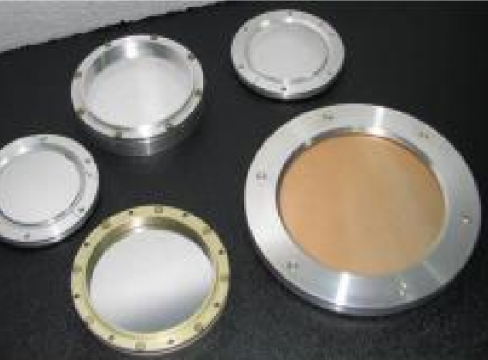
Ultra-thin resonance absorbers represent a thin-film structure that absorbs radiation with resonance using the set wavelength and (if necessary) polarization while reflecting radiation outside the operating band. Absorbers can be effectively used in the basis of selective bolometric detectors due to unprecedentedly minor thickness as compared to the operating wavelength (approximately of the second order) and efficiency of absorbtion in resonance close to 1.
All optical elements are produced on the basis of multi-layered frequency-selective surfaces - thin planar metal-coated microstructures with cells of special geometric shape, the topology of which defines the frequency properties of the element. Frequency-selective surfaces are resonant electrodynamic structures operated in the mode, in which the resonance frequency is below the point of excitation of high-order diffraction harmonics. This approach allows to create optical elements with unique properties unachievable or hard-hitting within the frames of traditional optics.
Central frequency of selection band |
0.05 to 3 THz |
Central frequency of absorbtion band |
0.05 to 0.5 THz |
Relative width of absorbtion band |
3 to 10 % |
Maximum absorbtion (at the central frequency) |
90 to 99.9 % |
Absorbtion outside the selection band |
below 5 % |
Beam aperture dameter |
25 to 70 mm |
